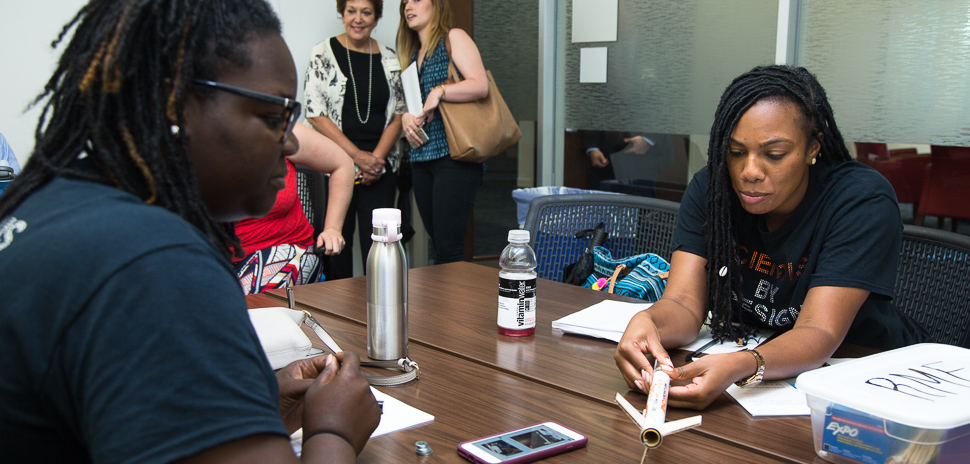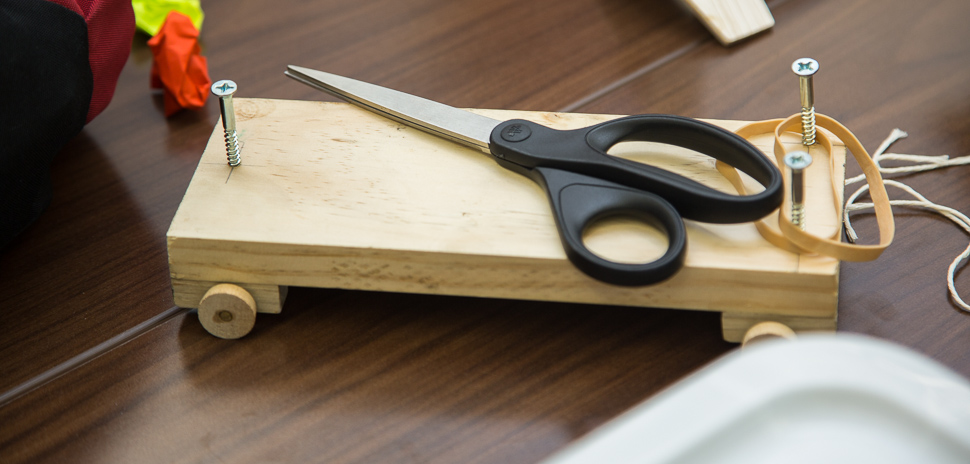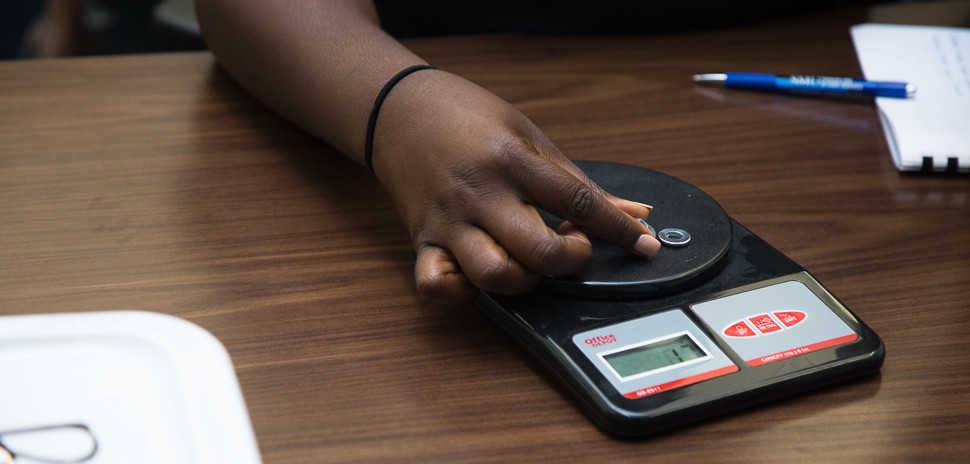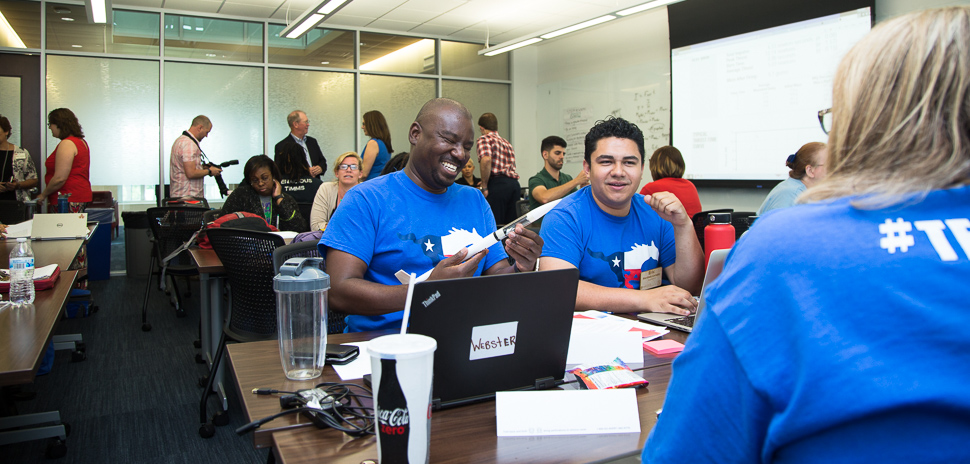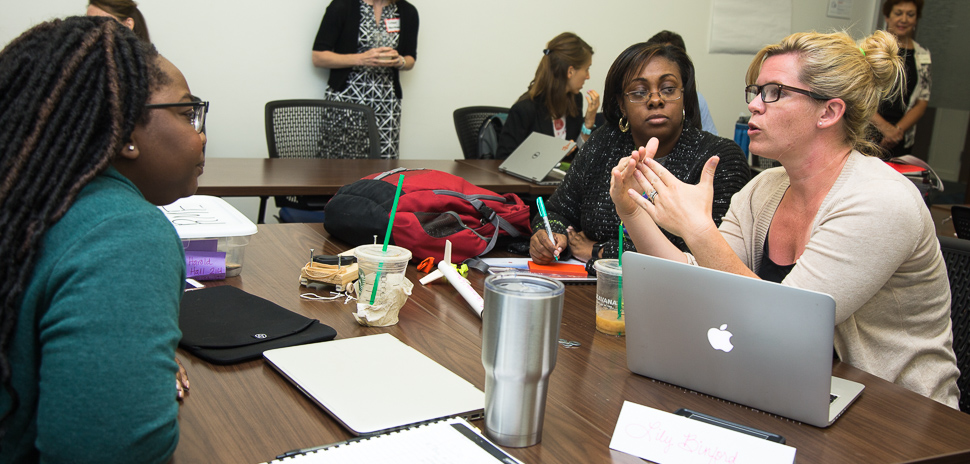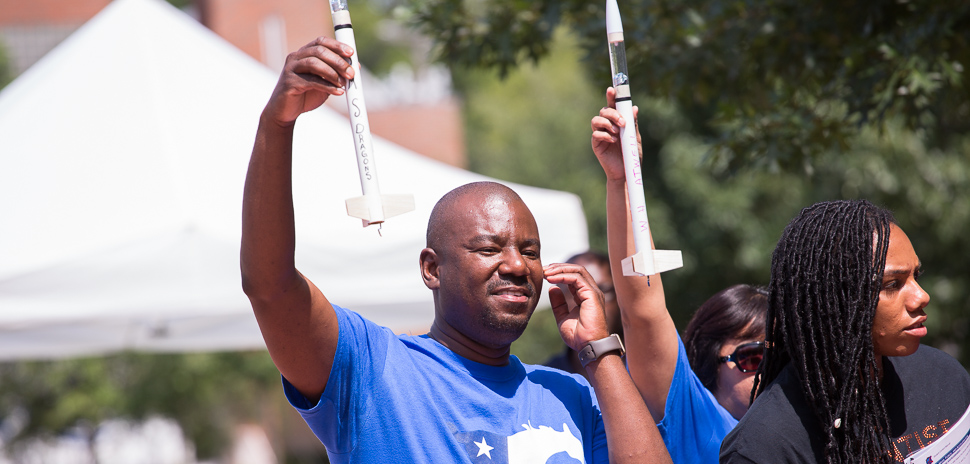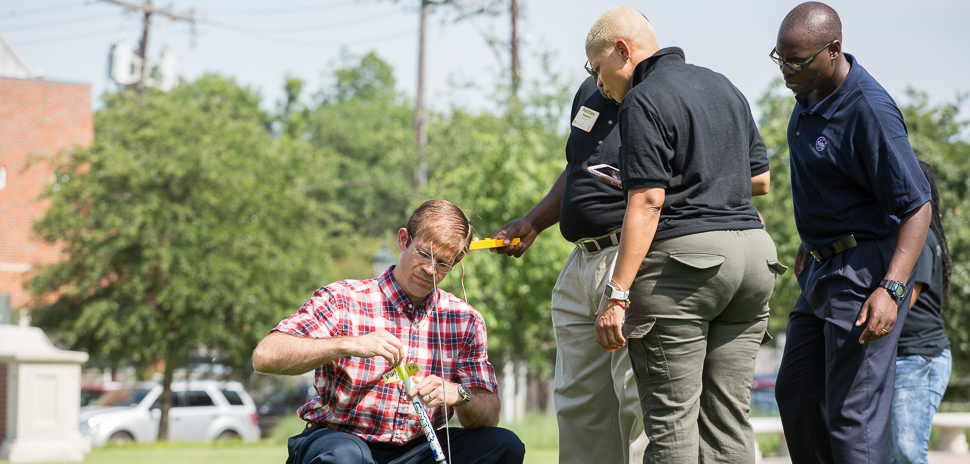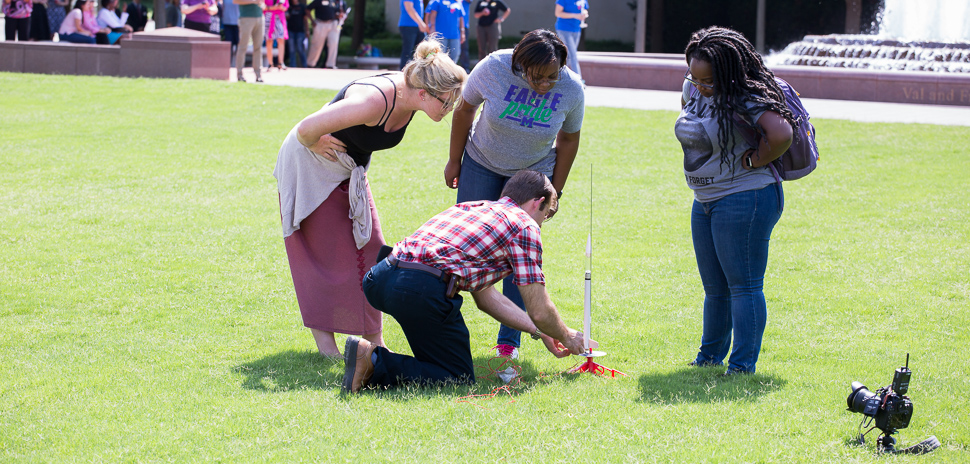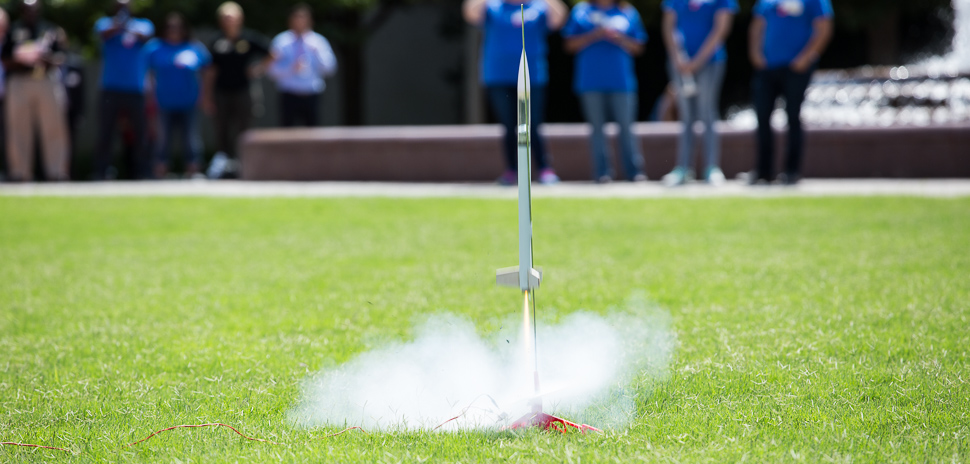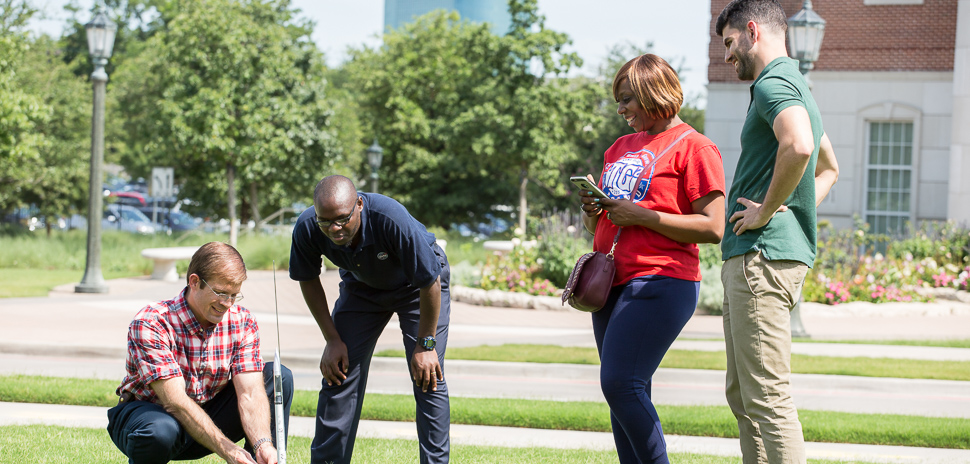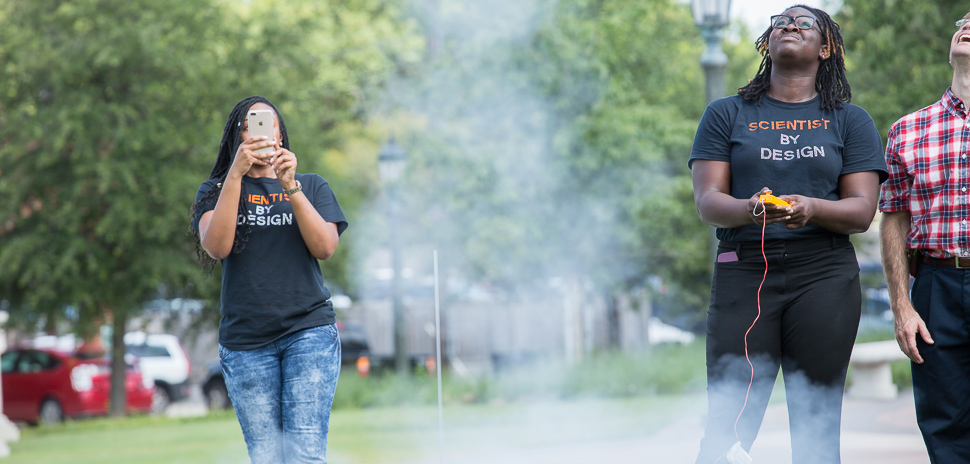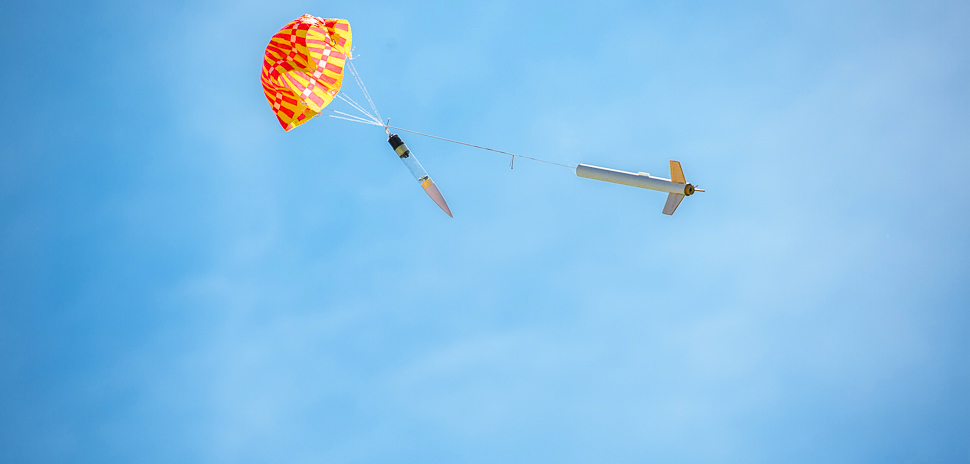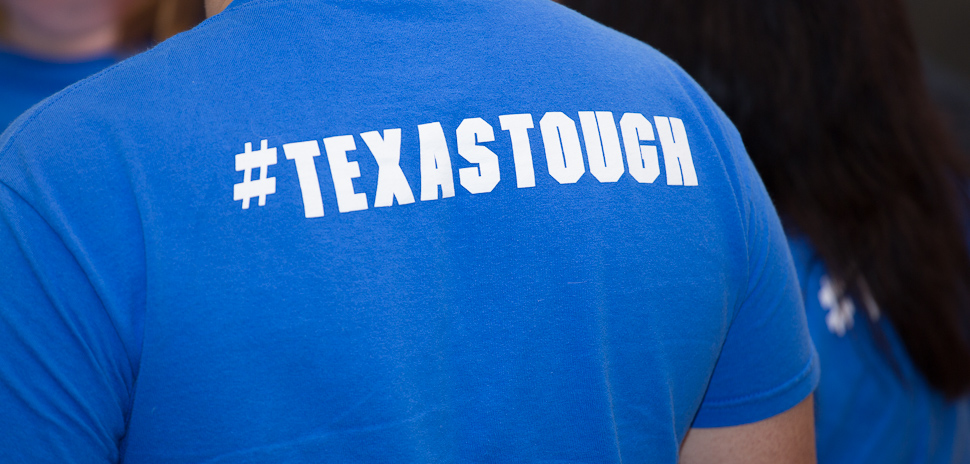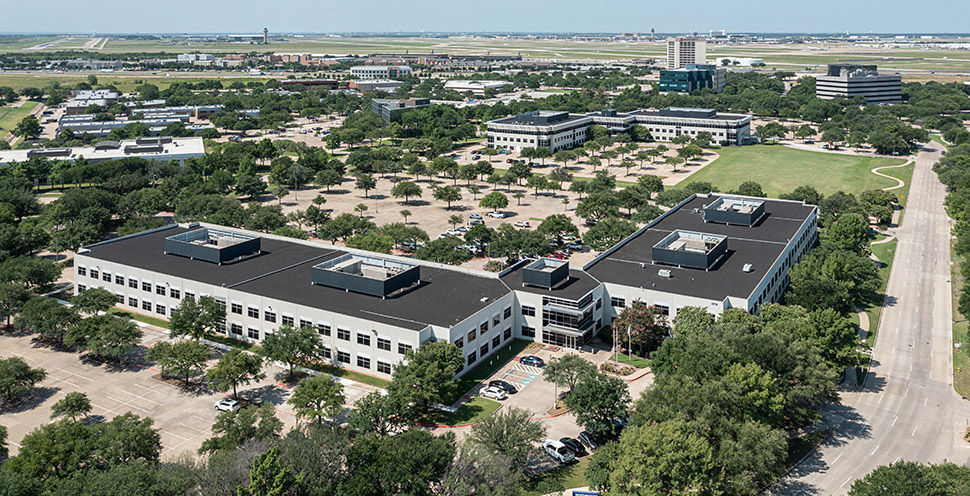This summer, Dallas ISD teachers are experiencing a new approach to professional development, unleashing their inner student spirits.
In an effort to increase students’ interest and success in science, technology, engineering, and mathematics coursework, Southern Methodist University has collaborated with DISD, the Texas Instruments Foundation, and the O’Donnell Foundation to provide a group of teachers hands-on instruction for creating interactive and engaging content for their classrooms.
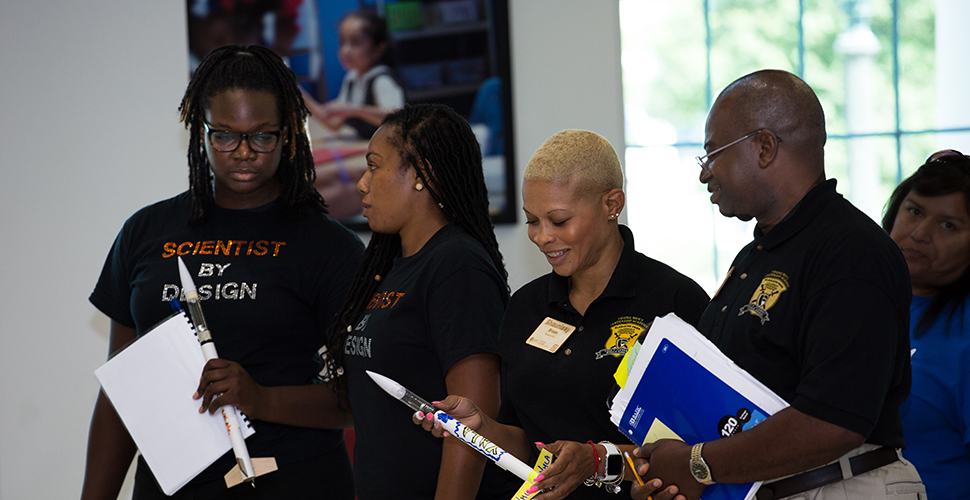
As part of the academy, teachers have learned how to turn an informal learning space such as the Dallas Zoo into an engaging teaching opportunity and kayaked the Trinity River using scientific tools along the way to discover the habitat and wildlife. Last week, STEM academy participants gathered outside their classroom on SMU’s campus to test rockets they built themselves in a project-based learning activity.
SMU professors and mentors provided teachers with instruction and advice to construct rockets with varied payloads, and launched them to see how they reacted differently.
“I think us dropping it down to implementing this to middle school level is essentially going to have everybody college and career ready sooner.”
SHANNON WRIGHT
“Rocketry is one of those nice things that is fun to do and watch, and it’s exciting,” SMU professor Paul Krueger said. “One of the reasons we like it is because it’s a good way to connect the interesting physics related to motion that students are learning in middle school and something that’s practical, something that actually works.”
Teachers worked collaboratively within their school groups to build the rocket. Seagoville Middle School teacher Shannon Wright saw the project as a great tool for developing new and engaging content.
“We’ve learned a lot of things we can take back to the classroom and adapt it for our students to the level that they’re at,” Wright said, “I think us dropping it down to implementing this to middle school level is essentially going to have everybody college and career ready sooner.”
STEM ACADEMY ORIGINS
According to the National Math and Science Initiative, more than one million more STEM graduates are needed in the next decade to “stay competitive globally,” but only 17 percent of U.S. degrees are in STEM fields.
DISD recognized this shortage within its high schools, noting that the number of students choosing STEM endorsements is low.
“What we’re finding out is we have these kids going from middle school to high school, and whenever we survey them, they want to have a STEM career, but they don’t want to have a STEM endorsement in high school,” DISD STEM science director Jenny Christian said. “They’re not getting the connection between the two.”
To address this disconnect, the STEM Academy was created to focus on student success in middle school science classes through emphasizing teacher’s professional knowledge and skills, as well as campus administrator’s instructional leadership.
As a former high school science teacher, SMU STEM education expert and leader of the academy Leanne Ketterlin-Geller recognized these discrepancies and strives to not only engage students, but encourage them to choose a STEM endorsement in high school and pursue it as a career.
“We’re not just focusing on one teacher on one campus, we’re focusing on all of the teachers and their leaders because we know the importance and the value of having that leadership support,” Ketterlin-Geller said.
STEM ACADEMY FOCUSES ON DISD’S FUTURE
The academy is a four-week intensive program, but extends over the next three years. Teachers and campus administration representatives will continue to receive academic coaching and resources throughout the school year, and return to the academy for the next two summers.
“So much of science is hands-on, it’s engaging, but it’s also very challenging when you teach 150 students in a day and you have 47 minutes before you get the next group of students,”
LEANNE KETTERLIN-GELLER
Six DISD middle schools — Ann Richards, Atwell, Dade, Medrano, Seagoville and the Young Men’s Academy at Florence Middle School — were selected to participate through a competitive application process. This year’s academy consists of the 17 eighth grade science teachers and an administrative leader from each school.
Teachers focus on different approaches to inquiry-based and project-based learning projects associated with DISD’s high priority standards to increase both teacher and student success in STEM.
“So much of science is hands-on, it’s engaging, but it’s also very challenging when you teach 150 students in a day and you have 47 minutes before you get the next group of students,” Ketterlin-Geller said, “In a middle school setting, it can be really challenging to increase and have that inquiry-based science instruction.”
Next year, each of the middle schools’ sixth and seventh grade teachers will join the academy, as well as eighth grade teachers from nine additional DISD middle schools.
“It’s a cascading model to where we’re building support within this group, within these teams of teachers, and then building support throughout the campus,” Ketterlin-Geller said.
TI FOUNDATION SAYS STEM IS ‘WHERE THE FUTURE OF JOBS ARE’
The TI Foundation was a large donor to the academy, providing a $1.7 million grant to fund the project. Every year, the foundation invests 50 percent on education initiatives.
As a long time investor in DISD, Chairman of the TI Foundation Lewis McMahan believes that a growth in STEM endorsements starts with instructors.
“We find that teacher effectiveness is a good way to invest to leverage our dollars because teach a teacher, and they keep teaching.”
LEWIS McMAHAN
“We find that teacher effectiveness is a good way to invest to leverage our dollars because teach a teacher, and they keep teaching,” McMahan said.
The TI Foundation has focused on supporting STEM initiatives since the 1990s, and McMahan does not see that changing anytime soon.
“It’s so fundamentally important,” McMahan said, “It’s where the future jobs are, not just at TI.”
THE FUTURE OF STEM
At the end of the academy’s session, teachers will have developed units to implement into their classrooms for the following school year.
“At the end of the day, it’s a systemic way of thinking that we’re trying to change.”
JENNY CHRISTIAN
Teachers also will evaluate the program through surveys that will dictate what might change for the coming years. Ketterlin-Geller has already seen improvement through the academy’s instruction.
“The teachers had to rate themselves on project-based learning, maker-based learning, and inquiry-based instruction and there were a lot of questions,” Ketterlin-Geller said. “I think we’ve cleared up a lot of those.”
“At the end of the day, it’s a systemic way of thinking that we’re trying to change,” Christian said.Overall, the academy aims to launch students successfully into STEM careers that are continuing to grow.
“If you don’t ignite that passion, they won’t know they have it in them.”
PHOTO GALLERY
Photos by Chase Mardis
